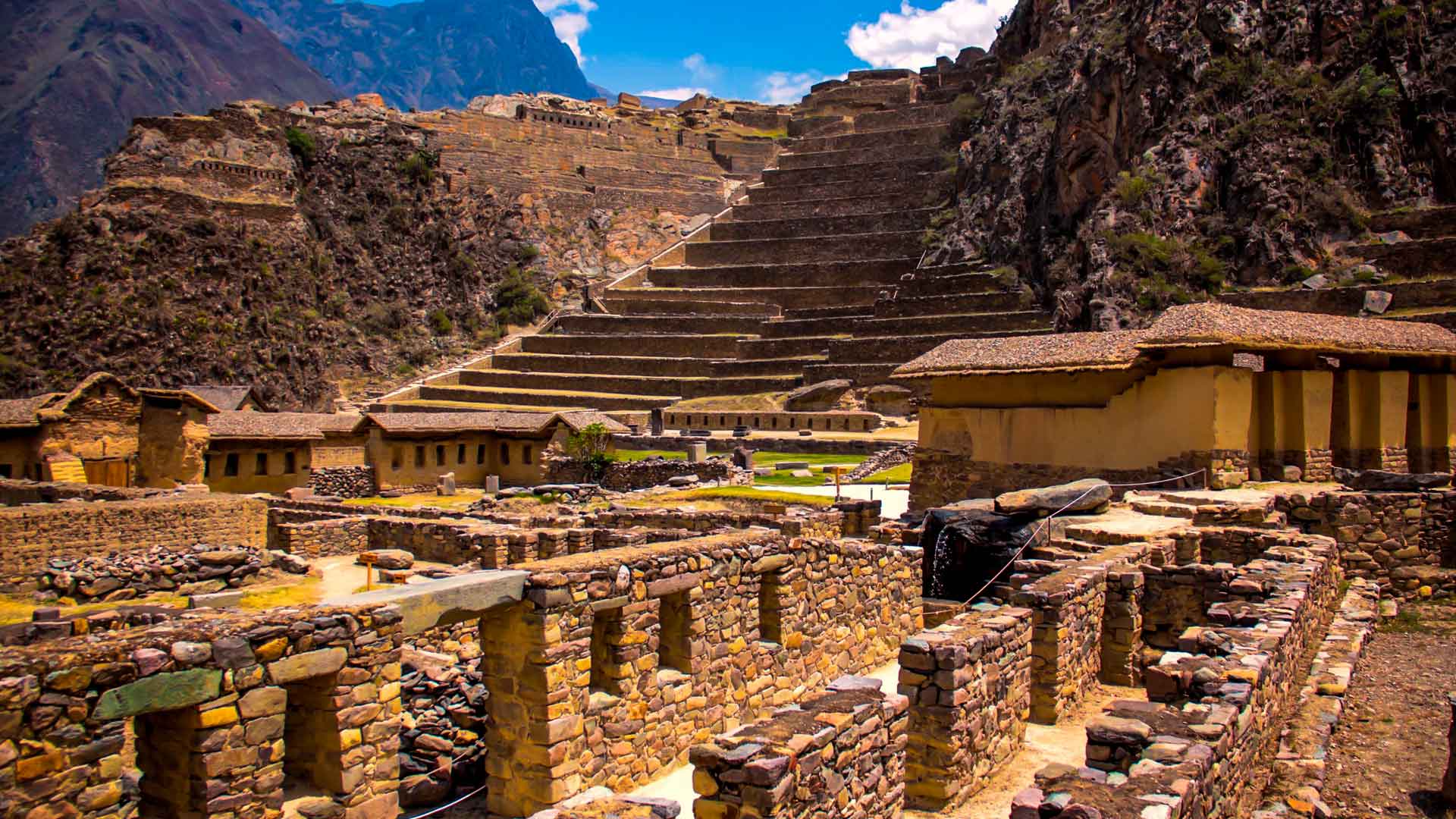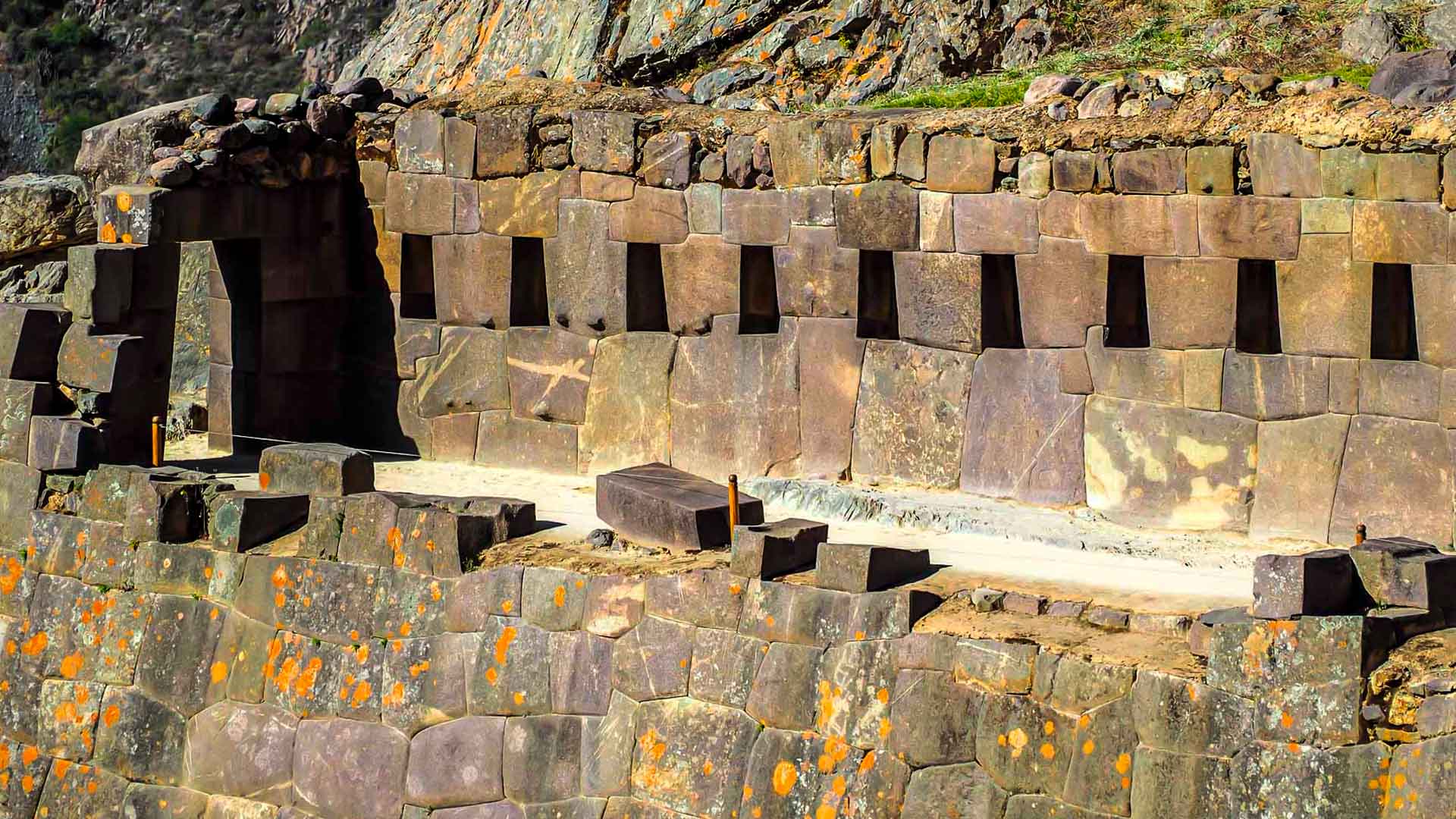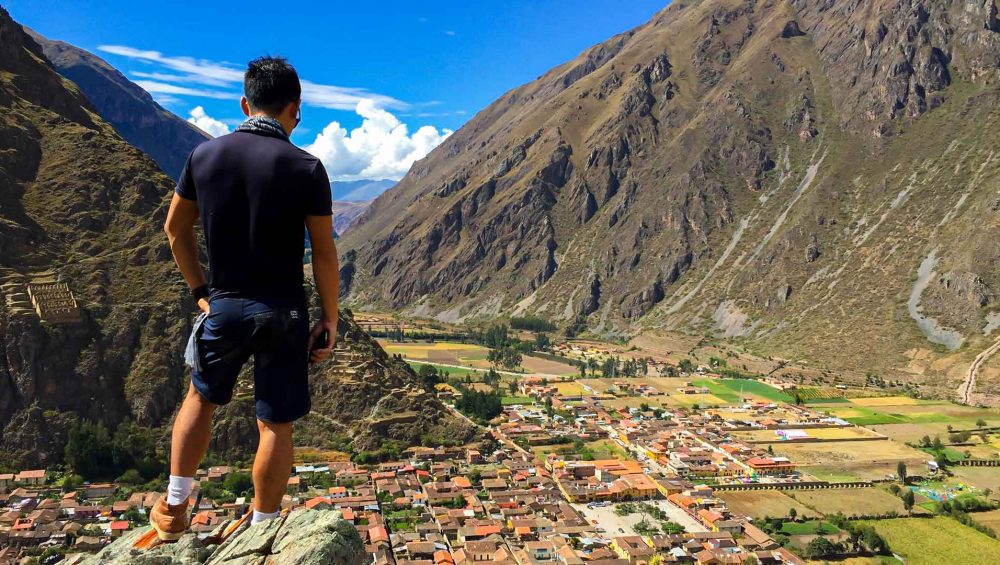Ollantaytambo is a fascinating archaeological site that holds the mysteries and history of the ancient Inca civilization. This place boasts a series of Inca buildings, which have endured to this day, and its location in the Sacred Valley of the Incas makes it a popular destination for visitors. So, explore its impressive stone-carved ruins and discover the cultural and spiritual richness that makes Ollantaytambo a historical gem and a perfect destination.

The ruins of Ollantaytambo in Peru
Located in the Sacred Valley of the Incas, about 60 kilometers from Cusco, the ruins of Ollantaytambo began as a fortified settlement and later became a sanctuary dedicated to the sun god, Inti. This place, whose name means “Place of the Rising Sun” in Quechua, was an important ceremonial center during the reign of the Inca Pachacútec and served as a defensive fortress against the Spanish during the conquest due to its strategic location.
Likewise, this place is recognized for its cultural and architectural significance. Its impressive ruins, including terraces, temples, and stone buildings constructed on the mountainside, highlight the monumental staircase that leads to the Temple of the Sun, used as an astronomical observatory. Today, its imposing structures continue to attract visitors from all over the world, fascinated by the history and ingenuity of the Inca civilization.
The Construction of Ollantaytambo by the Incas
One of the most remarkable discoveries in the region is Ollantaytambo, whose ruins exhibit a complex network of terraces and enormous steps carved into the mountain. However, this raises a question: How did the Incas manage to create such a formidable construction?
It is believed that the Incas worked with remarkable patience and skill, carving large blocks of stone using simple tools. Moreover, with an ingenious system of pulleys and ropes, they transported these massive blocks up the steep slopes and, using the ashlar technique, fitted them together with astonishing precision, achieving perfectly fitted walls without the need for mortar. This technique has allowed the structures of Ollantaytambo to stand for centuries, demonstrating the architectural skill and ingenuity of the Incas.

Exploring the Ruins of Ollantaytambo
To fully explore the Ollantaytambo ruins and appreciate their historical significance, consider starting your visit at dawn. The early morning hours offer a peaceful and serene atmosphere, allowing you to truly connect with the ancient site. As you walk through the terraces, you’ll be amazed by the Incas’ incredible engineering skills, evident in the precise fitting of each stone.
Hiring a local guide is a fantastic way to enhance your experience. They can share fascinating stories about the temples, granaries, and ceremonial plazas. As you wander through the well-preserved structures, you’ll gain a deeper understanding of Ollantaytambo’s importance in the Inca Empire, serving as a religious, agricultural, and military center.
Be sure to bring plenty of water and wear comfortable walking shoes to fully enjoy the trails and viewpoints. With careful planning, you can delve into the rich cultural heritage of this site and appreciate why it stands as an exceptional example of Inca engineering.
Entrance Fee to the Ruins
To visit the archaeological site of Ollantaytambo, a reasonable entrance fee is required, granting access to a significant Inca heritage. The current cost for adults is approximately 70 Peruvian Soles, with discounts available for students and youth. This payment allows exploration of key areas of the site, including the Temple Hill, agricultural terraces, and the renowned Temple of the Sun.
It is also important to carry cash, preferably in Peruvian Soles, as this is the accepted currency. The entrance fee not only facilitates access to this unique archaeological site but also supports the preservation of Peru’s cultural heritage.
RELATED: TOURIST TICKET TO SACRED VALLEY
Archaeological Sites in Cusco
Ollantaytambo is one of the sites that preserves the Inca legacy; however, Peru is home to many other equally fascinating archaeological sites that deserve to be explored. In Cusco, for example, you can tour the Sacred Valley of the Incas, where Pisac is located, famous for its agricultural terraces and vibrant artisan market. There are also the enigmatic stones of Sacsayhuaman, an impressive fortress whose enormous rocks fit together perfectly.
Each archaeological site in the Cusco region offers a unique experience to understand the Inca culture and its achievements. From Ollantaytambo to the lesser known corners of the Sacred Valley, visitors can discover the history and mysteries of this ancient civilization.

